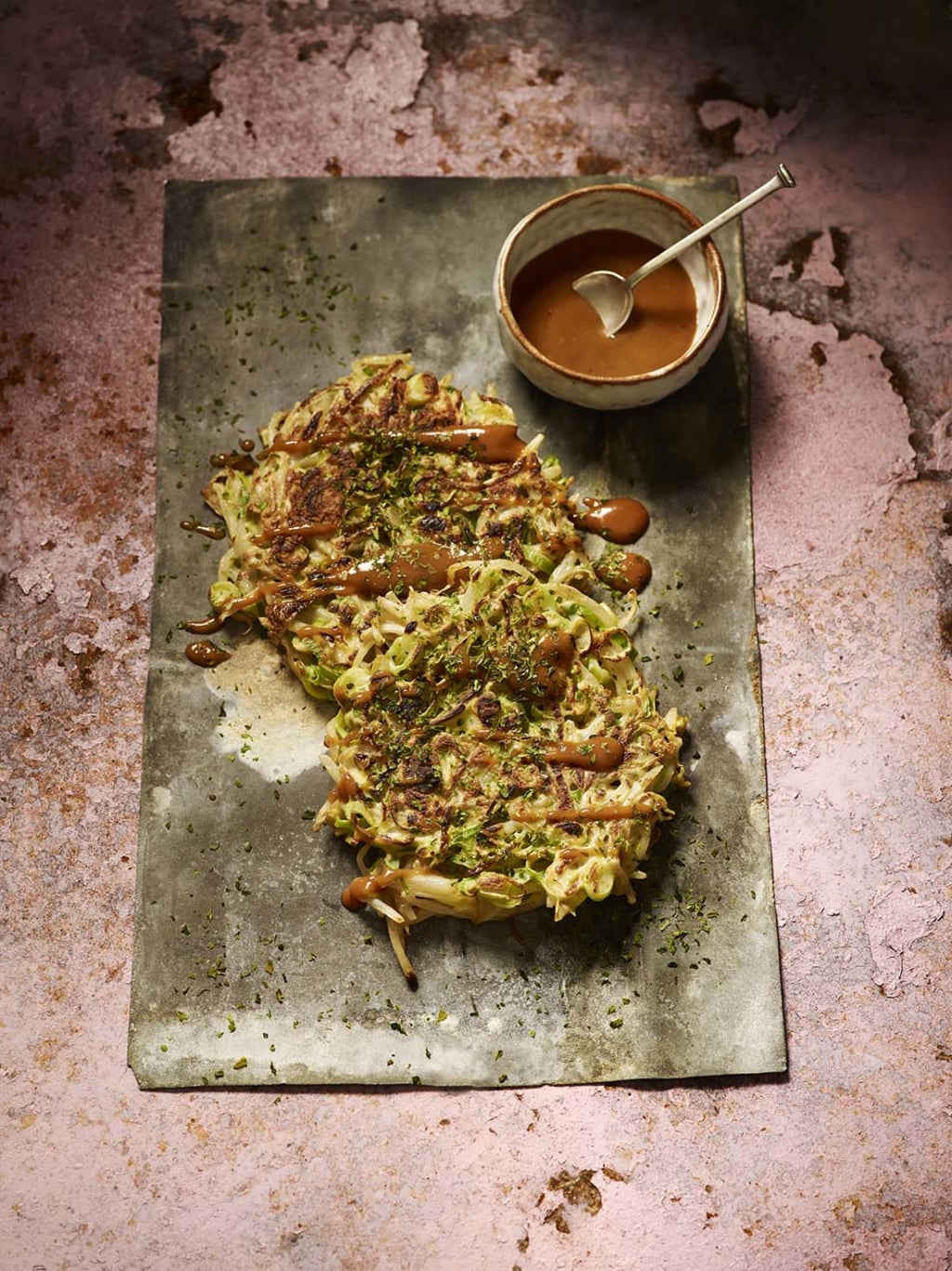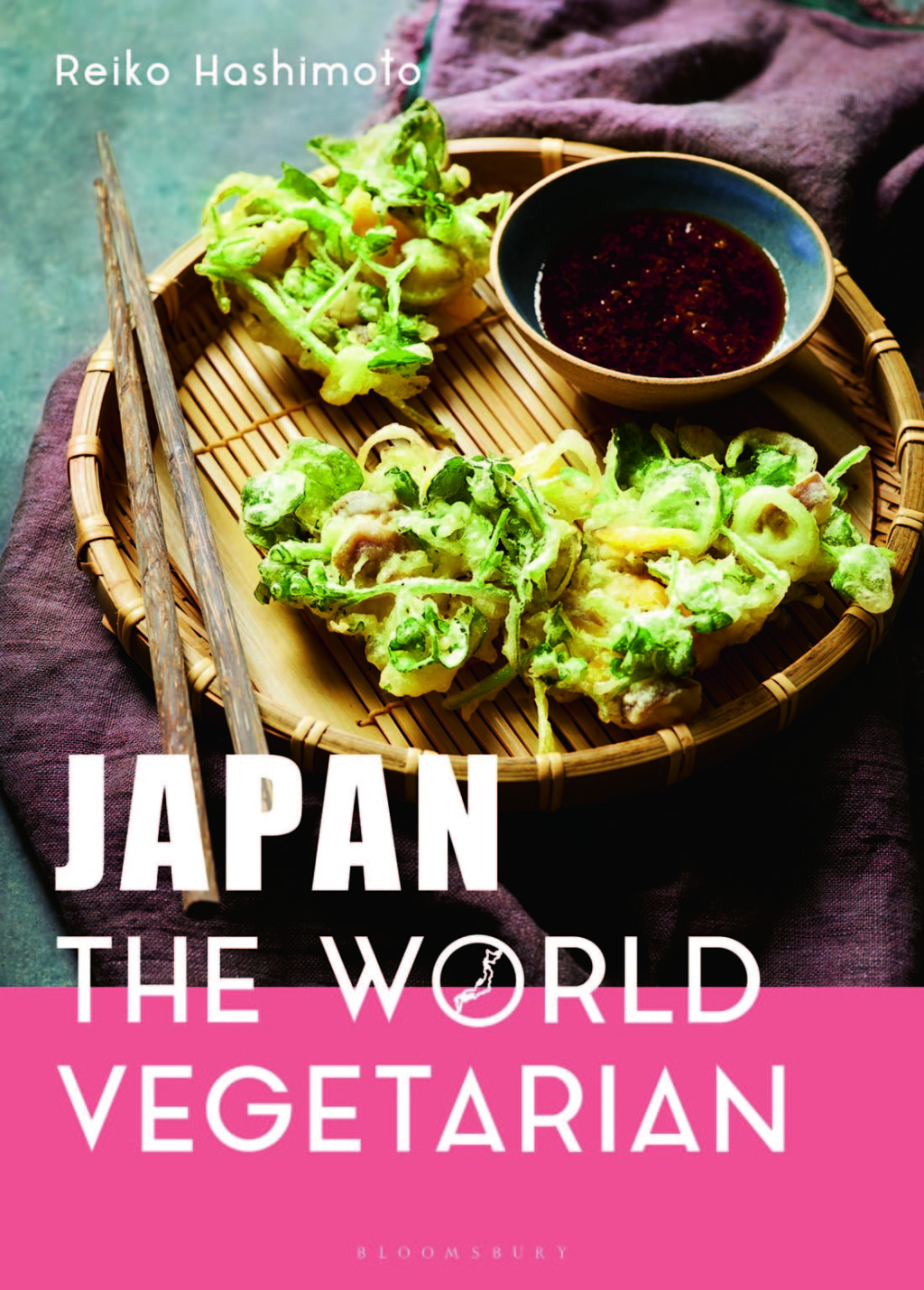Okonomiyaki with Miso-wasabi Mayo, by Reiko Hashimoto
The chef puts these Japanese pancakes in the spotlight in a recipe taken from her book ‘Japan, the World Vegetarian.’

Bloomsbury
‘Okonomiyaki is a traditional savoury pancake and literally translates to “grilled as you like it.” You simply mix in vegetables or whatever you fancy. I have created this lighter version, using only a little flour but plenty of eggs and beansprouts, which go very well together,’ explains chef Reiko Hashimoto.
Serves 4
Ingredients
300 g beansprouts
2 tablespoons plain flour
½ teaspoon sea salt
½ teaspoon shichimi pepper or ground white pepper
2 eggs, lightly beaten
3 spring onions, finely chopped
4 tablespoons sunflower or vegetable oil
2 tablespoons ao-nori (seaweed) powder, to serve
For the miso-wasabi mayo:
1 tablespoon miso
1 tablespoon mayonnaise
½ teaspoon wasabi paste
1 teaspoon soy sauce
1 teaspoon rice vinegar
1 teaspoon sugar
Method
Steam the beansprouts in a steamer for 5 minutes. Alternatively, place the beansprouts in a bowl, cover with clingfilm, and microwave for 3 minutes. Leave to cool. When cool enough to handle, drain and squeeze any excess water out gently.
Mix the flour, salt, and pepper in a large bowl. Add the eggs, spring onions, and drained beansprouts. Stir together well.
In a small bowl, combine the ingredients for the miso-wasabi mayo.
Heat 1 tablespoon of oil in a large frying pan over a medium-high heat. Scoop half of the batter into a pan – you’re after a thickness of about 1.5 cm. Reduce the heat to medium-low and cook for about 5 minutes, or until the bottom is nicely caramelised and has formed a brown crust.
Use a spatula to carefully turn the pancake over and then cook for a further 3–4 minutes or until the other side is a nice dark-brown. Keep warm and repeat with the remaining batter.
Transfer to a large chopping board and then cut each pancake into 4 or 6 triangular pieces. Arrange on a serving plate and then drizzle over the miso-wasabi mayo. Sprinkle the ao-nori powder over the top and serve.
In her book Japan, the World Vegetarian, Reiko Hashimoto seeks to make cooks aware of seasonal vegetables, an essential element of Japanese cuisine. While proposing indulgent recipes, she also makes sure to offer balanced dishes.
After studying English Literature and embarking on a brief career as an air hostess, which enabled her to discover world cuisine, Reiko Hashimoto changed careers to teach foreigners living in Japan about the country’s cuisine. She now lives in London and runs Hashi, a Japanese cookery school that she founded in 2001, where she trains both beginners and chefs from all over the world.
Japan, the World Vegetarian (2020) by Reiko Hashimoto, is published by Bloomsbury Absolute.

Bloomsbury
TRENDING
-
Gashadokuro, the Legend of the Starving Skeleton
This mythical creature, with a thirst for blood and revenge, has been a fearsome presence in Japanese popular culture for centuries.

-
The Tattoos that Marked the Criminals of the Edo Period
Traditional tattoos were strong signifiers; murderers had head tattoos, while theft might result in an arm tattoo.

-
The Tradition of the Black Eggs of Mount Hakone
In the volcanic valley of Owakudani, curious looking black eggs with beneficial properties are cooked in the sulphurous waters.

-
Recipe for Ichiraku Ramen from ‘Naruto’ by Danielle Baghernejad
Taken from the popular manga with the character of the same name who loves ramen, this dish is named after the hero's favourite restaurant.

-
Tatsuro Yamashita, King of City Pop
The visionary pop singer and producer, who endowed the Japanese tech-boom as a utopian escape for future generations.





